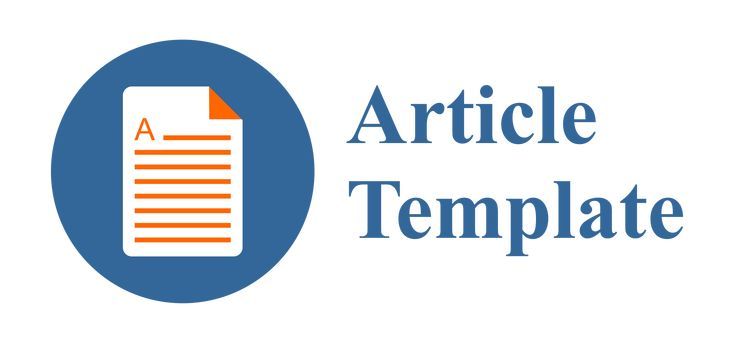Klasifikasi Penyakit Diabetes Menggunakan Metode CFS dan ROS dengan Algoritma J48 Berbasis Adaboost
DOI:
https://doi.org/10.29408/edumatic.v5i1.3336Keywords:
Adaboost, Correlation Feature Selection, Diabetes Mellitus, J48, , Random Over SamplingAbstract
Diabetes was a disease that occurs due to high blood-glucose levels. Researchers tried to prevent complications from developing by using data mining techniques. One of the techniques used in data mining was classification. The purpose of this study improves the accuracy of the classification of diabetes for a better and optimal result. The method in this study is Correlation Feature Selection (CFS) as attribute selection, Random Over Sampling to handle unbalanced data and AdaBoost to improve the performance of the J48 algorithm so the result obtained best. Based on the result of this study, showed that Correlation Feature Selection for attribute selection and Random Over Sampling to handle imbalance's class with the Adaboost-based J48 algorithm proved can increase the results of the diabetes classification with an accuracy of 92.3%. For the further research recommended to apply other methods so that the accuracy results obtained are more optimal for comparison.
References
Bunkhumpornpat, C., & Sinapiromsaran, K. (2017). DBMUTE : density-based majority under-sampling technique. Knowledge and Information Systems, 50(3), 827–850. https://doi.org/10.1007/s10115-016-0957-5
Castellano, J. G. (2017). Adaptative CC4.5 : Credal C4.5 with a rough class noise estimator. Expert Systems With Applications. https://doi.org/10.1016/j.eswa.2017.09.057
Ferone, A. (2018). Feature selection based on composition of rough sets induced by feature granulation. International Journal of Approximate Reasoning, 101, 276–292. https://doi.org/10.1016/j.ijar.2018.07.011
Harianto et al. (2020). Optimasi Algoritma Naïve Bayes Classifier untuk Mendeteksi Anomaly dengan Univariate Fitur Selection. Edumatic: Jurnal Pendidikan Informatika, 4(2), 40–49. https://doi.org/10.29408/edumatic.v4i2.2433
Hayashi, Y., & Yukita, S. (2016). Informatics in Medicine Unlocked Rule extraction using Recursive-Rule extraction algorithm with J48graft combined with sampling selection techniques for the diagnosis of type 2 diabetes mellitus in the Pima Indian dataset. Informatics in Medicine Unlocked, 2, 92–104. https://doi.org/10.1016/j.imu.2016.02.001
Heyong, W., & Ming, H. (2019). Supervised Hebb rule based feature selection for text classification. Information Processing and Management, 56, 167–191. https://doi.org/10.1016/j.ipm.2018.09.004
Kaunang, F. J. (2019). Penerapan Algoritma J48 Decision Tree Untuk Analisis Tingkat Kemiskinan di Indonesia. CogITo Smart Journal, 4(2), 348–357. https://doi.org/10.31154/cogito.v4i2.141.348-357
Kemenkes. (2018). Riset Kesehatan Dasar (RIKESDAS).
Khairani. (2019). Hari Diabetes Sedunia Tahun 2018. Jakarta: Kementerian Kesehatan RI.
Li, F., Zhang, X., Zhang, X., Du, C., Xu, Y., & Tian, Y. C. (2018). Cost-sensitive and hybrid-attribute measure multi-decision tree over imbalanced data sets. Information Sciences, 422, 242–256. https://doi.org/10.1016/j.ins.2017.09.013
Listiana, E., & Muslim, M. A. (2017). Penerapan Adaboost Untuk Klasifikasi Support Vector Machine Guna Meningkatkan Akurasi Pada Diagnosa Chronic Kidney Disease. Prosiding SNATIF, 875–881.
Mardi, Y. (2017). Data Mining : Klasifikasi Menggunakan Algoritma C4.5. Jurnal Edik Informatika, 2(2), 213–219.
Permana, B. A. C., & Dewi, I. K. (2021). Komparasi Metode Klasifikasi Data Mining Decision Tree dan Naïve Bayes Untuk Prediksi Penyakit Diabetes. Infotek : Jurnal Informatika Dan Teknologi, 4(1), 63–69.
Srinivas, K. (2017). A Case Study On Class Imbalance Diabetes Data Using. International Journal of Advances in Electronics and Computer Science, (8), 13–16.
Syukron, A., & Subekti, A. (2018). Penerapan Metode Random Over-Under Sampling dan Random Forest Untuk Klasifikasi Penilaian Kredit. Jurnal Informatika, 5(2), 175–185. https://doi.org/10.31311/ji.v5i2.4158
Takdirillah, R. (2020). Penerapan Data Mining Menggunakan Algoritma Apriori Terhadap Data Transaksi Sebagai Pendukung Informasi Strategi Penjualan. Edumatic : Jurnal Pendidikan Informatika, 4(1), 37–46. https://doi.org/10.29408/edumatic.v4i1.2081
Downloads
Published
How to Cite
Issue
Section
License
Semua tulisan pada jurnal ini adalah tanggung jawab penuh penulis. Edumatic: Jurnal Pendidikan Informatika bisa diakses secara free (gratis) tanpa ada pungutan biaya, sesuai dengan lisensi creative commons yang digunakan.

This work is licensed under a Lisensi a Creative Commons Attribution-ShareAlike 4.0 International License.




